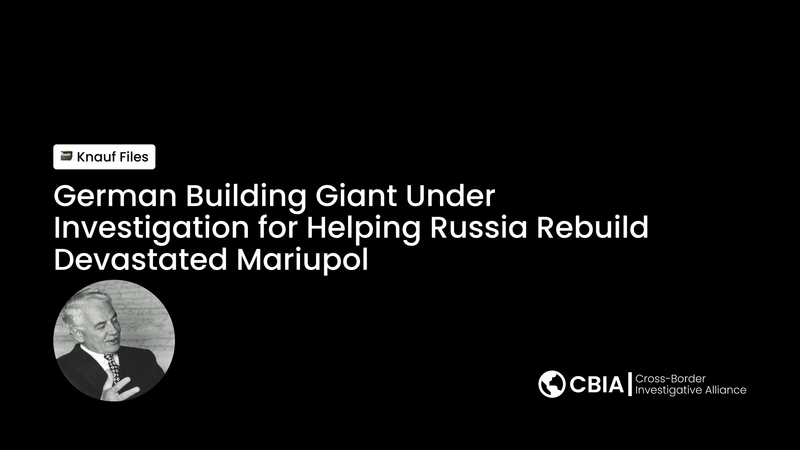Chapter 4: Building for Battle

German Materials in Russian Military Sites
German company Knauf’s construction materials, including plasterboard and adhesives, were used in Russian military facilities such as nuclear missile silos after Russia invaded Ukraine. This happened through Russian subsidiaries and distributors, even though Knauf publicly opposed the invasion and claimed to follow sanctions.
Knauf Materials in Russian Military Facilities
Knauf’s products—like Rotband plaster, Tiefengrund primer, Uniflott joint compound, and Cleaneo acoustic boards—were listed by name in Russian government procurement documents for military construction. These materials were used at sites including the Yasny missile base, Plesetsk Cosmodrome, Kapustin Yar test range, Severodvinsk Naval Shipyard, and Sary Shagan radar complex. Leaked documents and satellite images confirmed these deliveries and installations.
Supply Chain and Compliance
Knauf shipped products from Germany to its Russian subsidiaries before sanctions took effect. These subsidiaries then sold the materials to local distributors, some of which were linked to Russian military contractors. Knauf’s internal audits admitted that their compliance checks only covered direct customers, not the final users. This allowed their materials to be used in military projects without oversight.
Technical Preference for Knauf Products
Russian military procurement documents show that Knauf’s products were chosen for their superior technical qualities, such as better electromagnetic shielding, fire resistance, sound insulation, and chemical protection. Russian defense agencies preferred Knauf materials over local options for these reasons.
Strategic Impact
Knauf’s materials helped Russia upgrade and fortify its nuclear and military sites, making them more secure and harder to attack. Western intelligence agencies recognized that Russian facility improvements were made possible in part by Western materials, including those from Knauf, and adjusted their military planning accordingly.
Corporate Response
Knauf claimed it only sold to independent distributors and could not control how its products were ultimately used. Internal company communications instructed staff not to ask about the end use of products. Knauf continued doing business in Russia after the invasion but later announced it would leave the Russian market due to external pressure.
Summary Table: Knauf Materials in Russian Military Sites
| Site/Project | Knauf Materials Used | Evidence Type |
|---|---|---|
| Yasny Missile Complex | Rotband, Tiefengrund, Uniflott, Cleaneo | Leaked procurement, imagery |
| Plesetsk Cosmodrome | Multiple Knauf products | Procurement records, imagery |
| Kapustin Yar Test Range | Acoustic panels | Procurement records |
| Severodvinsk Naval Shipyard | Marine-grade products | Procurement, waste analysis |
| Sary Shagan Radar Site | Electromagnetic shielding materials | Procurement records |
Summary
Knauf’s construction materials were used in Russian military and nuclear sites after the invasion of Ukraine, as shown by official documents and satellite images. The company’s compliance system did not prevent these materials from reaching the Russian military through intermediaries. Russian defense agencies specifically wanted Knauf products for their technical benefits, and these materials directly contributed to the strengthening of Russia’s strategic sites. Knauf only decided to exit the Russian market after facing public and legal pressure.
All major points are supported by leaked documents, satellite analysis, and independent investigations. The use of Knauf materials in Russian military infrastructure is clearly established.





